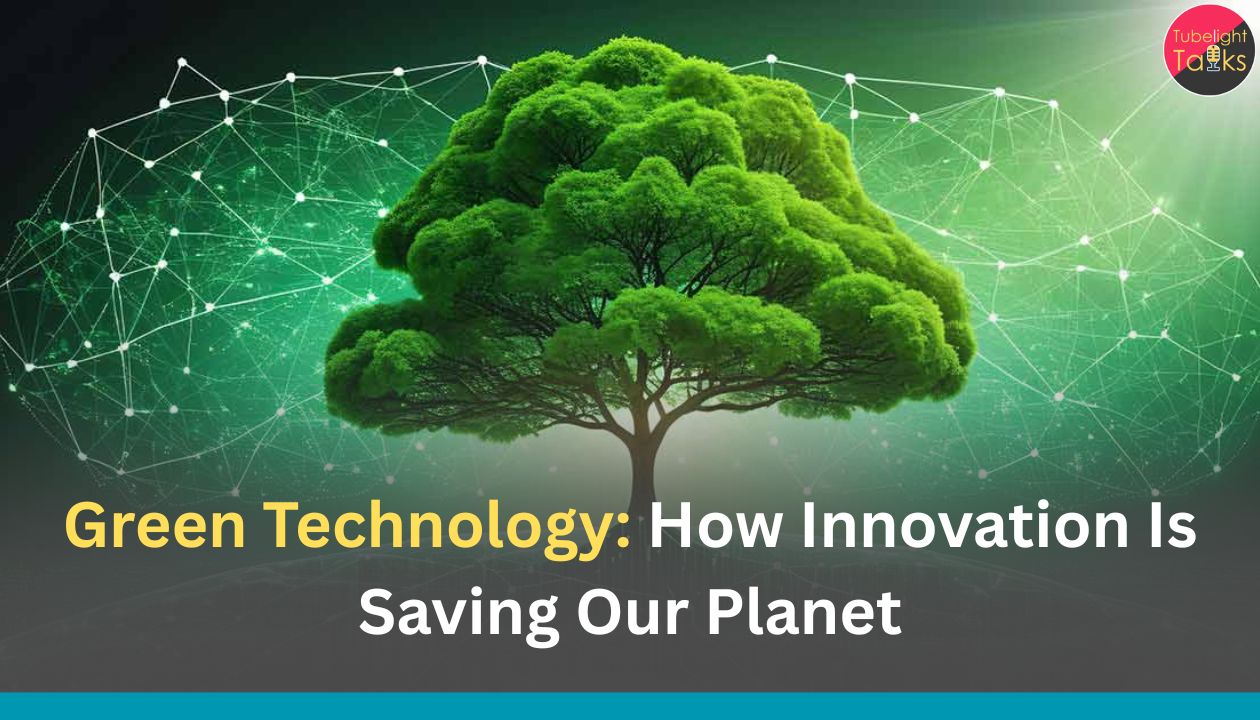The Earth is at a turning point. Rising temperatures, melting glaciers, deforestation, and pollution are threatening life on our planet. But amid these challenges, green technology — or eco-innovation — is offering hope.
Green technology focuses on creating solutions that reduce environmental damage, conserve energy, and promote sustainability. From solar panels and electric vehicles to biodegradable materials and AI-driven waste management, these innovations are reshaping the way humanity lives and works.
What Is Green Technology?
Green technology (or cleantech) refers to the development and use of products, systems, and processes that are environmentally friendly and resource-efficient. The key goal is to meet present needs without compromising the ability of future generations to meet theirs. It involves innovation across sectors like:
- Renewable energy
- Sustainable agriculture
- Green construction
- Waste recycling and management
- Eco-friendly transportation
In short, it’s about balancing progress with preservation.
Renewable Energy — Powering a Cleaner Future
One of the greatest achievements of green technology is the global shift towards renewable energy sources such as solar, wind, and hydroelectric power.
India, under its National Solar Mission, has become a global leader in solar energy, with massive solar parks and rooftop installations. Wind power is also gaining ground, particularly in states like Tamil Nadu and Gujarat.
By replacing fossil fuels with renewable sources, we reduce greenhouse gas emissions, improve air quality, and promote energy independence.
Green Mobility — The EV Revolution
Transportation is a major source of pollution, but electric vehicles (EVs) are changing the game. Companies worldwide are developing efficient EVs powered by clean energy instead of fossil fuels.
India’s FAME (Faster Adoption and Manufacturing of Hybrid and Electric Vehicles) policy encourages this transition, offering subsidies and charging infrastructure. Every EV on the road brings us closer to a carbon-neutral world.
Sustainable Living and Green Architecture
Modern architects and engineers are embracing green building designs — structures that use natural light, rainwater harvesting, solar panels, and eco-friendly materials. Organizations like the Indian Green Building Council (IGBC) are promoting designs that save energy and reduce carbon footprints. Sustainable living is not just about using less; it’s about living consciously.
Recycling and Waste Management Innovations
Technology is making recycling smarter and more efficient. AI-based systems now help in sorting waste, converting plastics into fuel, and turning organic waste into compost or biogas. Countries like India are adopting circular economy models — reusing materials instead of discarding them — ensuring nothing goes to waste. This shift supports both economic growth and environmental protection.
Agriculture 2.0 — Feeding the Planet Sustainably
Green technology is also transforming agriculture. With precision farming, drones, and IoT sensors, farmers can optimize irrigation, monitor crops, and reduce pesticide use. This not only improves productivity but also safeguards soil health and water resources. Sustainable agriculture ensures that future generations inherit fertile lands, not barren ones.
Why Green Innovation Matters
Every eco-friendly innovation contributes to:
- Lower carbon emissions
- Cleaner air and water
- Healthier ecosystems
- Economic growth through green jobs
- Global cooperation for sustainability
As climate change threatens survival, innovation guided by wisdom becomes our greatest strength.
Nature Is Divine Creation
Saint Rampal Ji Maharaj teaches that nature is not a resource to exploit, but a sacred creation of the Supreme God Kabir. When we harm nature, we harm ourselves.
Through Annapurna Muhim, the vision extends beyond human welfare — it embraces the well-being of all living beings. Its principle — roti, kapda, siksha, chikitsha aur makan har gareeb ko dega Kabir Bhagwan — reflects compassion, equality, and environmental balance.
True “green living” means acting in harmony with creation — using technology responsibly and sharing Earth’s blessings selflessly. Real progress is when both humanity and nature thrive together.
Also Read: India’s Green Hydrogen Mission in 2025: SIGHT Auctions, Port Hubs, Breakthrough Prices
FAQs: Renewable Energy
Q1. What are examples of green technology?
Solar panels, wind turbines, electric vehicles, biodegradable materials, and water purification systems.
Q2. How does green technology help the environment?
It reduces pollution, conserves resources, and minimizes carbon emissions while promoting sustainable living.
Q3. Is green technology affordable?
Initially costly, but long-term savings in energy and resources make it cost-effective and beneficial for all.
Q4. How can individuals adopt green living?
Use renewable energy, reduce plastic waste, recycle, and support eco-friendly products and policies.
Q5. What’s the link between spirituality and sustainability?
Spiritual values inspire responsibility, compassion, and balance — key ingredients for a sustainable future.










